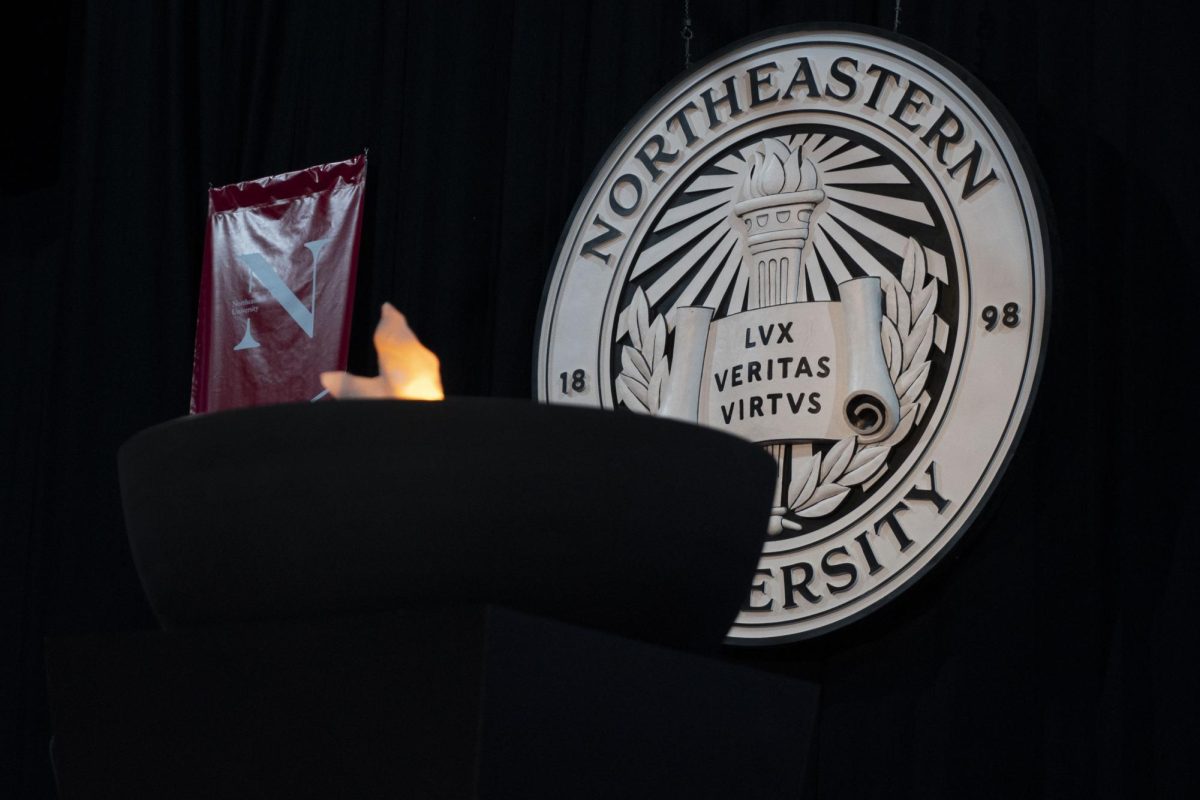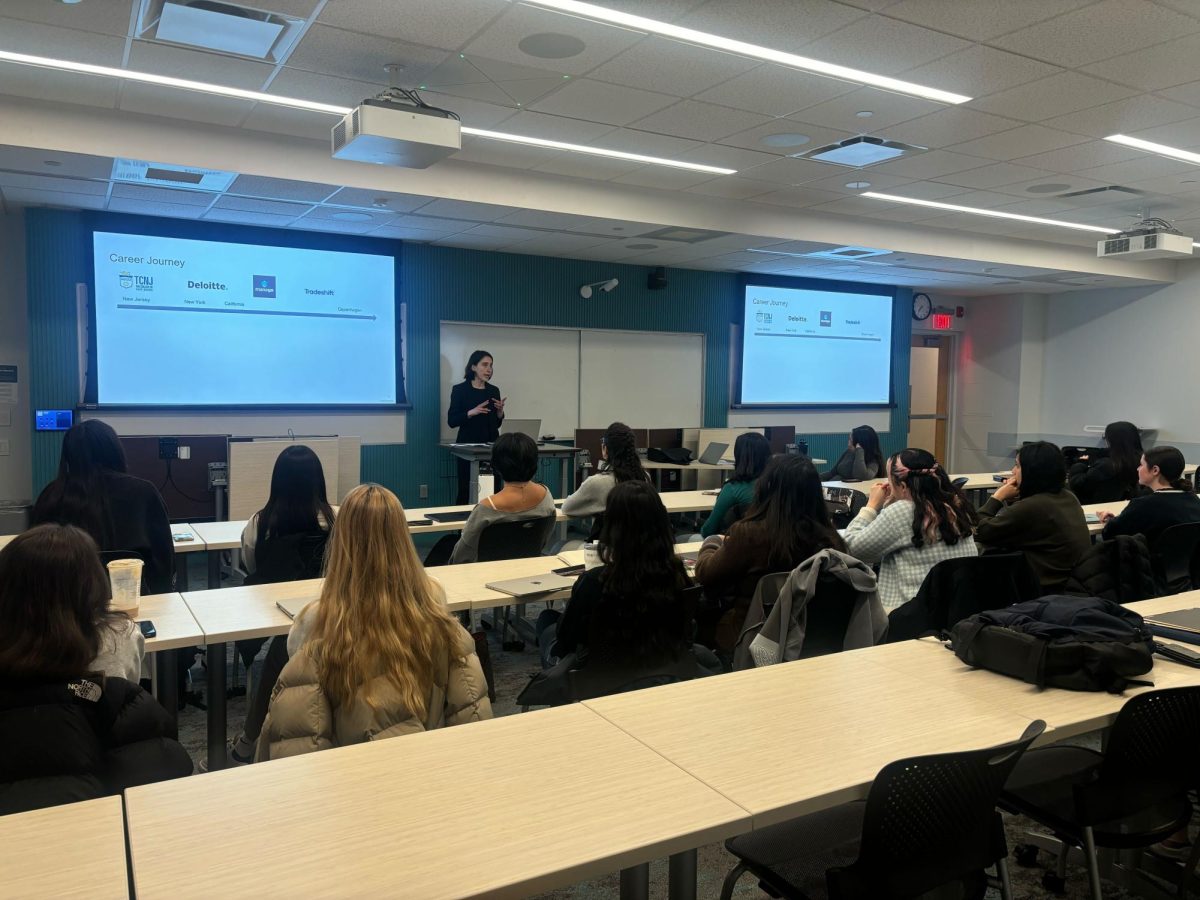More than a year after the Supreme Court struck down affirmative action in college admissions, the share of students who identify as Black enrolled in Northeastern University’s class of 2028 dropped 35%, from 7.8% to 5.1%, compared to the class of 2027.
In the class of 2028, 38.3% of students identify as white, per a university spokesperson, 5.1% identify as Black, 5.3% as two or more races, 13.3% as Hispanic, 0.35% as Native American and 25.2% as Asian American, according to demographic data published the morning of Sept. 12 in the university-run news outlet Northeastern Global News. The university did not report how many students identify as international students or how many students did not disclose their race or ethnicity.
Of the 2,775 newly-enrolled students on the Boston campus, there are 72 fewer Black students than the year before, 79 more Asian American students and roughly 60 more white students. While around 36% of last year’s first-year class was white, per the university’s Common Data Set, the share of white students in this year’s class has increased to 38.3%.
“Like all colleges and universities in the U.S., Northeastern was required to change its admissions protocols to comply with the Supreme Court’s 2023 ruling,” Northeastern’s Vice President for Communications Renata Nyul told The News in a Thursday email. “We continue to place tremendous value on the educational benefits of a diverse student body, and seek to enroll students from a broad range of life experiences within the bounds of the law.”
Other nearby universities saw similar declines in Black student enrollment. At Boston University, Black student enrollment dropped from 9% in the class of 2027 to 3% in the class of 2028. At Harvard University, Black student enrollment dropped 4 percentage points, per reporting by the Harvard Crimson. At Amherst College and Tufts University, enrollment of Black students for this year’s entering class dropped 8 percentage points and roughly 3 percentage points, respectively.
In the Supreme Court’s June 2023 decision, Chief Justice John Roberts, writing for a 6-3 conservative supermajority, argued that race-based admissions policies at Harvard University and the University of North Carolina violated the Equal Protection Clause of the Constitution. The ruling effectively ended the use of race-conscious admissions and overturned nearly 40 years of precedent that allowed higher education institutions to use affirmative action programs to increase and ensure the diversity of their student populations.
Incoming Northeastern class reflects administrators’ concerns
Admissions experts and university faculty, including many at Northeastern, worried the ruling would diminish universities’ ability to build diverse student bodies and provide opportunities to underrepresented groups.
“Many of us are beneficiaries of decades of affirmative action … and we’re clearly at a turning point in the history of the application of affirmative action rules and procedures,” said Ted Landsmark, distinguished professor of public policy and urban affairs, during a January panel on the affirmative action ruling.
While the share of Black students decreased 35%, the data indicate a 4.8% increase in the share of white students, a 3% increase in the share of Hispanic students and a 12% increase in the percent of students who identify as Asian American.
The share of students who identified as two or more races dropped 27% from the year before and the percent of Native American students increased 900%, from one student in the class of 2027 to 10 in the class of 2028. While international students and students who did not disclose their race or ethnicity make up 12.45% of the class of 2028, The News could not confirm the specific percent made up by each category.
The drop-off in the share of enrolled Black students comes after many university leaders, in the wake of the Supreme Court’s ruling, reemphasized Northeastern’s commitment to diversity.
Immediately following the Court’s decision, Northeastern President Joseph E. Aoun wrote to the Northeastern community stating the ruling would “dramatically alter the use of race as a factor in college admissions,” but reaffirmed the university’s pledge to build a “globally diverse community.”
“We embrace diversity, in all its forms, because it makes Northeastern stronger as an institution of teaching and learning,” Aoun wrote. “We will remain steadfast in our commitment to building a globally diverse community — and we will continue working to foster a genuine sense of belonging on all of our campuses.”
University leaders long anticipated SCOTUS decision, worked to implement strategies
Throughout the past year, university faculty and leaders have said in meetings and interviews with The News they had long expected the Supreme Court’s 2023 decision.
“I’ve been in this role just shy of two years,” Northeastern’s Chief Legal, Compliance and Risk Officer Mary Strother said at a November 2023 faculty senate meeting. “For a significant portion of that time, I’ve been worrying and waiting for the opinion to come down from the Supreme Court.”
During the meeting, Northeastern administrators spoke about several strategic components the university would use in the wake of the affirmative action ruling. These included increased outreach to Boston and Oakland public schools, continued financial aid and a holistic review of prospective students’ applications and essays.
“There’s every effort being made so that we don’t see a downward turn in the recruitment and enrollment of students that are BIPOC,” Chief Enrollment Officer Satyajit Dattagupta said during the meeting.
Chancellor and Senior Vice President for Learning Ken Henderson told The News in an April interview that in the wake of the Supreme Court’s ruling, the university increased collaboration with “organizations that are historically minority-serving” and expanded resources into geographic areas the university had not previously “spent as much time and energy in.”
Future Northeastern diversity efforts remain unclear
It’s not clear what, if any, additional strategies the university will implement going forward to make up for the declining enrollment of Black students. While several other local universities have implemented new supplemental application essays, which prompt students to discuss how their culture or identities have impacted them, Northeastern does not plan on requiring essays for applicants, Henderson told The News.
The demographic data also reveal the university will not achieve its goal, laid out by Aoun, to have the university reflect “the diversity of our nation and society by 2025.” The goal was part of the President’s Action Plan, written during June 2020’s nationwide racial reckoning, to “address the scourge of systemic racism.”
Per the United States Census Bureau, 58.4% of the U.S. identifies as white and non-Hispanic, 19.5% as Hispanic, 13.7% as Black, 6.4% as Asian, 3.1% as two-or-more races and 1.3% as Native American. While the ethnic and racial make-up of the current student body is not yet clear — it can be determined once the university publishes its 2024-2025 Common Data Set — the recently-published data indicate the university will fall short of Aoun’s goal.
When asked about the diversity goal in the April interview, Henderson said the university must observe a few more admission cycles “in order to tell how this court’s decision actually affects the outcome.” In his plan, Aoun charged Henderson, Provost and Senior Vice President for Academic Affairs David Madigan and all senior vice presidents with “implementing recruitment and retention strategies for students, faculty, and staff, that are welcoming of all individuals.”
But changes in leadership and lack of transparent data make it difficult to track the university’s progress toward its diversity, equity and inclusion goals.
The university’s chief inclusion officer, Karl Reid, left his post in the early spring to fill a similar role at the Massachusetts Institute of Technology. Richard O’Bryant, director of the John D. O’Bryant African American Institute, filled his position under the new title chief inclusion and belonging officer. The faculty senate’s Inclusion and Diversity Committee called the position in their 2023-24 Final Report “vital … in advancing Diversity, Equity, and Inclusion (DEI) efforts within the institution.”
The report also states the university’s progress on previous recommendations issued by the committee, such as standardizing DEI language and making diversity data more accessible, examines the DEI action plans across campuses and colleges and provides goals for the future.
The committee meets throughout the academic year and provides a report each spring.
The university has also not uploaded diversity data to its DEI data dashboard since fall 2022, meaning Northeastern’s ethnic and racial makeup in 2023, 2024 and 2025 remain unclear. Additionally, the highly-anticipated 2023 Diversity & Equity Climate Survey Report has also not been made public — despite the mention of its completion in university communications.
Nyul told The News the climate survey would be published “soon.”
Correction: A previous version of this story incorrectly stated the share of white students in the class of 2028 was 50.75%. This was based on the university’s reporting that “49.25% of enrolled students identify as non-white.” After receiving updated data from the university, the story was updated at 8:30 a.m. Sept. 13 to reflect that the share of white students is 38.3%, a 4.8% increase from the class of 2027.
The Huntington News is dedicated to serving the Northeastern University community with original, professional reporting and creating an environment in which student journalists can learn from one another. Support an independent, free press at Northeastern University with your donation today.












